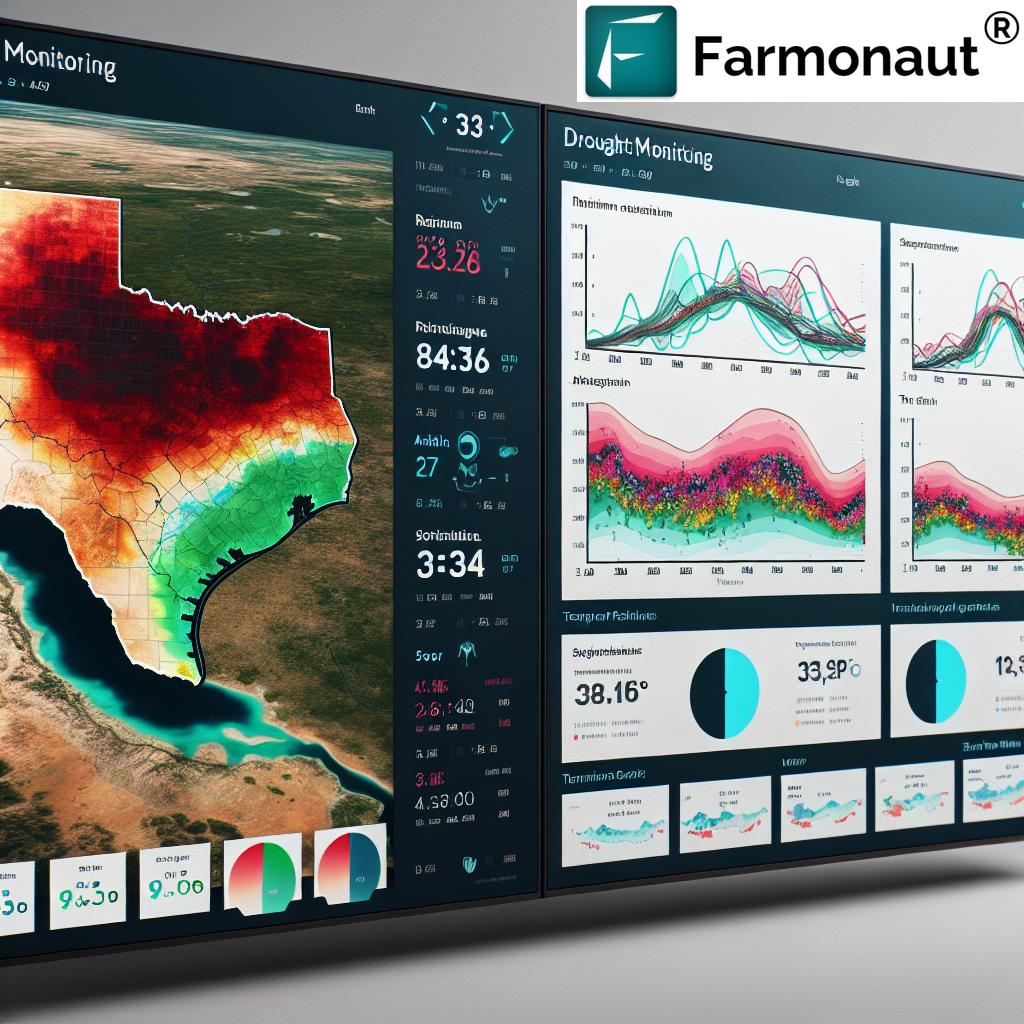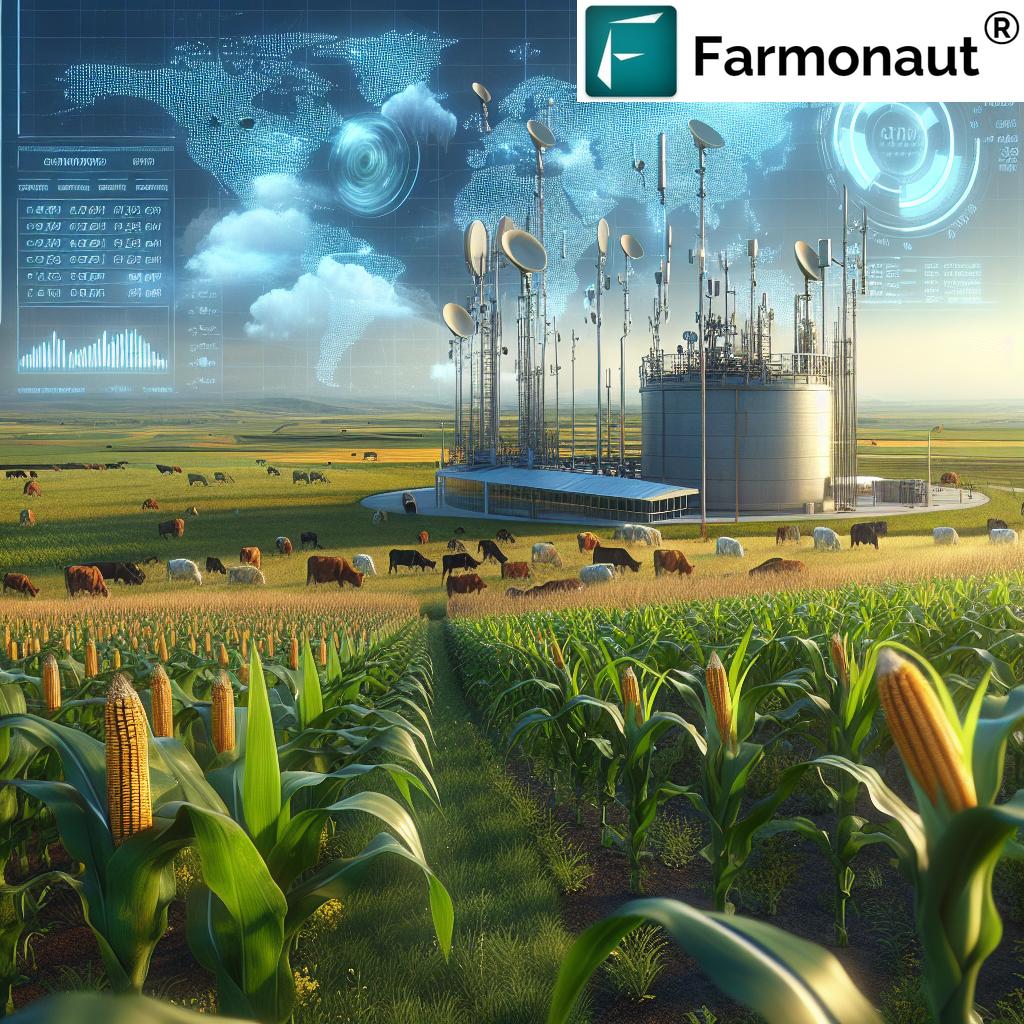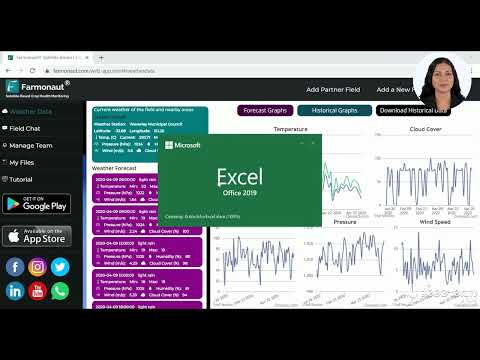Breaking News: Texas Drought-Free After 3 Years – Farmonaut Analyzes U.S. Agricultural Weather Trends
“Texas experienced a 3-year drought before finally becoming drought-free, highlighting the significance of long-term weather patterns in agriculture.”
Welcome to our comprehensive analysis of the latest agricultural weather trends in the United States, with a special focus on the remarkable recovery of Texas from a prolonged drought. As experts in agricultural technology and weather monitoring, we at Farmonaut are excited to share our insights on this significant development and its implications for farmers, ranchers, and the agricultural industry as a whole.

The End of Texas’s Three-Year Drought Struggle
For the past three years, Texas has been grappling with persistent drought conditions that have significantly impacted its agricultural sector. However, we are thrilled to report that as of April 2023, Texas has finally been declared drought-free. This milestone marks a turning point for the state’s farmers, ranchers, and agricultural communities who have long awaited relief from the dry conditions.
Let’s delve into the factors that contributed to this positive change and explore the broader implications for U.S. agriculture:
- Increased Precipitation: A series of well-timed rainfall events across Texas has replenished soil moisture levels and filled reservoirs.
- Improved Weather Patterns: Shifts in atmospheric circulation have brought more consistent moisture to the region.
- Effective Water Management: Implementation of water conservation strategies and improved irrigation techniques have helped maximize the benefits of increased rainfall.
To better understand the impact of this drought recovery, let’s examine how it compares to other regions across the United States.
| Region/State | Drought Status | Duration of Previous Drought (months) | Estimated Rainfall Increase (%) | Crop Yield Impact (%) | Livestock Management Challenges (Scale 1-5) | Soil Moisture Improvement (%) | Irrigation Efficiency Change (%) |
|---|---|---|---|---|---|---|---|
| Texas | Drought-Free | 36 | 30 | +15 | 2 | 40 | +10 |
| Oklahoma | Moderate | 24 | 15 | +5 | 3 | 20 | +5 |
| New Mexico | Severe | 48 | 5 | -10 | 4 | 10 | 0 |
| Kansas | Abnormally Dry | 18 | 10 | 0 | 2 | 15 | +3 |
| Colorado | Moderate | 30 | 8 | -5 | 3 | 12 | +2 |
As we can see from the table, Texas has made remarkable progress compared to its neighbors. This improvement has significant implications for agricultural productivity and resource management in the region.
The Role of Drought Monitoring Tools in Agricultural Success
At Farmonaut, we understand the critical importance of accurate and timely drought monitoring for agricultural success. Our advanced satellite-based farm management solutions provide farmers with real-time insights into crop health, soil moisture levels, and weather patterns. These tools are essential for making informed decisions about irrigation, planting schedules, and resource allocation.
Key features of effective drought monitoring tools include:
- High-resolution satellite imagery for precise field-level analysis
- AI-powered crop health assessment using vegetation indices like NDVI
- Real-time weather data integration for accurate forecasting
- Historical data analysis for trend identification and future planning
By leveraging these technologies, farmers can proactively manage their operations in the face of changing weather patterns and drought conditions.
Agricultural Weather Forecasting: A Game-Changer for Farmers
Accurate weather forecasting is crucial for agricultural success, especially in regions prone to drought. At Farmonaut, we provide cutting-edge agricultural weather forecasting services that help farmers make informed decisions about their operations.
Our weather forecasting tools offer:
- Short-term and long-term precipitation forecasts
- Temperature trend analysis
- Potential evapotranspiration (PET) predictions
- Severe weather alerts and advisories
By integrating these forecasts with our satellite-based crop monitoring system, farmers can optimize their resource usage and mitigate the impacts of adverse weather conditions.
“U.S. agricultural drought monitoring tools analyze precipitation patterns, evapotranspiration forecasts, and soil moisture to optimize crop production and livestock management.”
Livestock Drought Management: Adapting to Changing Conditions
The recent drought recovery in Texas brings relief to livestock producers who have faced significant challenges in recent years. Effective livestock drought management is crucial for maintaining herd health and productivity during dry periods.
Key strategies for livestock drought management include:
- Rotational grazing to preserve pasture quality
- Strategic supplemental feeding programs
- Water conservation and efficient distribution systems
- Herd size management based on available resources
Our Farmonaut platform provides ranchers with valuable insights into pasture conditions, helping them make informed decisions about grazing patterns and resource allocation.

Precision Agriculture Technology: Maximizing Efficiency in Drought-Prone Areas
Precision agriculture technology plays a crucial role in optimizing farm operations, especially in regions susceptible to drought. At Farmonaut, we’re at the forefront of this technological revolution, offering farmers advanced tools to maximize their efficiency and productivity.
Our precision agriculture solutions include:
- Satellite-based crop health monitoring
- AI-powered advisory systems for optimal resource management
- Field-level weather data integration
- Crop-specific management zones for targeted interventions
By leveraging these technologies, farmers can make data-driven decisions that lead to improved yields, reduced input costs, and enhanced sustainability.
Crop Irrigation Efficiency: Conserving Water in a Changing Climate
As drought conditions persist in many parts of the United States, improving crop irrigation efficiency has become more critical than ever. Farmonaut’s advanced monitoring tools help farmers optimize their irrigation practices, ensuring that crops receive the right amount of water at the right time.
Key aspects of efficient irrigation management include:
- Real-time soil moisture monitoring
- Crop-specific irrigation scheduling
- Precision application technologies (e.g., drip irrigation, variable rate systems)
- Water-use efficiency tracking and analysis
By implementing these strategies, farmers can significantly reduce water consumption while maintaining or even improving crop yields.
Potential Evapotranspiration Forecasts: A Vital Tool for Water Management
Understanding potential evapotranspiration (PET) is crucial for effective water management in agriculture. Farmonaut’s weather forecasting tools include detailed PET predictions, helping farmers anticipate crop water needs and optimize irrigation schedules.
Benefits of PET forecasts for agriculture:
- Improved irrigation timing and efficiency
- Enhanced crop stress management
- Better long-term water resource planning
- Reduced risk of over-irrigation and nutrient leaching
By incorporating PET forecasts into their decision-making processes, farmers can achieve a better balance between crop water requirements and available resources.
Drought Trend Analysis: Understanding Long-Term Patterns
While Texas’s recent drought recovery is cause for celebration, it’s essential to consider long-term drought trends across the United States. At Farmonaut, we analyze historical data and current conditions to provide insights into these trends and their potential impacts on agriculture.
Key factors in drought trend analysis include:
- Long-term precipitation patterns
- Temperature trends and their impact on evaporation rates
- Changes in snowpack and spring runoff
- Shifts in atmospheric circulation patterns
By understanding these trends, farmers and policymakers can develop strategies to enhance agricultural resilience in the face of changing climate conditions.
U.S. Agricultural Drought Conditions: A Regional Perspective
While Texas has seen significant improvement, drought conditions continue to affect various regions across the United States. Let’s examine the current situation in different areas:
- Southwest: Persistent drought conditions in parts of Arizona, New Mexico, and Nevada
- California: Improved conditions following a wet winter, but long-term concerns remain
- Great Plains: Varying conditions, with some areas experiencing relief while others face ongoing dryness
- Midwest: Generally favorable conditions, with localized areas of abnormal dryness
- Southeast: Improved conditions in most areas, with some lingering dryness in parts of Florida and Georgia
These regional variations highlight the importance of localized drought monitoring and management strategies.
Weather Impact on Crop Yields: Navigating Variability
Weather conditions, particularly drought, can have a significant impact on crop yields. At Farmonaut, we help farmers navigate this variability by providing accurate forecasts and real-time monitoring tools.
Key weather factors affecting crop yields include:
- Timing and amount of precipitation
- Temperature extremes and heat stress
- Frost and freeze events
- Severe weather incidents (e.g., hail, strong winds)
By leveraging our advanced monitoring and forecasting tools, farmers can make informed decisions about planting dates, crop selection, and management practices to optimize yields in the face of weather uncertainties.
Soil Moisture Management: The Foundation of Drought Resilience
Effective soil moisture management is crucial for maintaining crop health and productivity, especially in drought-prone areas. Farmonaut’s satellite-based monitoring systems provide farmers with accurate, real-time data on soil moisture levels across their fields.
Key aspects of soil moisture management include:
- Regular monitoring of soil moisture at various depths
- Implementing conservation tillage practices to reduce evaporation
- Using cover crops to improve soil structure and water retention
- Adjusting irrigation schedules based on real-time soil moisture data
By optimizing soil moisture management, farmers can improve their crops’ resilience to drought conditions and maximize water use efficiency.
Farmonaut: Your Partner in Agricultural Weather Intelligence
At Farmonaut, we’re committed to providing farmers with the most advanced tools and insights for weather monitoring and agricultural management. Our comprehensive platform integrates satellite imagery, AI-powered analytics, and real-time weather data to deliver actionable insights for improved decision-making.
Key features of our platform include:
- High-resolution satellite imagery for precise crop monitoring
- AI-driven crop health analysis and yield prediction
- Customized weather forecasts and alerts
- Soil moisture tracking and irrigation recommendations
- Historical data analysis for long-term planning
We invite you to explore our solutions and see how Farmonaut can help you navigate the challenges of agricultural weather variability.
Access our services through multiple platforms:
For developers interested in integrating our data into their own applications, we offer a comprehensive API. Explore our API Developer Docs for more information.
Conclusion: Embracing Technology for Agricultural Resilience
As we’ve seen with Texas’s recent drought recovery, weather patterns can have a profound impact on agricultural productivity. By leveraging advanced technologies like those offered by Farmonaut, farmers can better prepare for and adapt to changing conditions.
From drought monitoring tools and precision agriculture technology to advanced weather forecasting and soil moisture management, the agricultural industry has more resources than ever to navigate the challenges posed by climate variability. As we look to the future, continued innovation and adoption of these technologies will be key to ensuring food security and agricultural sustainability in the face of an ever-changing climate.
FAQs
- How does Farmonaut’s satellite imagery help in drought monitoring?
Farmonaut uses high-resolution satellite imagery to analyze vegetation health, soil moisture levels, and crop stress, providing farmers with real-time insights into drought conditions and their impact on crops. - Can Farmonaut’s tools help predict future drought conditions?
While we can’t predict droughts with certainty, our advanced weather forecasting and historical data analysis can help identify trends and provide valuable insights for long-term planning. - How often is the satellite data updated on Farmonaut’s platform?
Our satellite data is typically updated every 3-5 days, depending on the specific location and satellite coverage. - Is Farmonaut’s technology suitable for small-scale farmers?
Yes, our platform is designed to be accessible and valuable for farmers of all scales, from small family farms to large agricultural operations. - How can livestock producers benefit from Farmonaut’s services?
Livestock producers can use our platform to monitor pasture conditions, track water availability, and make informed decisions about grazing patterns and herd management.






